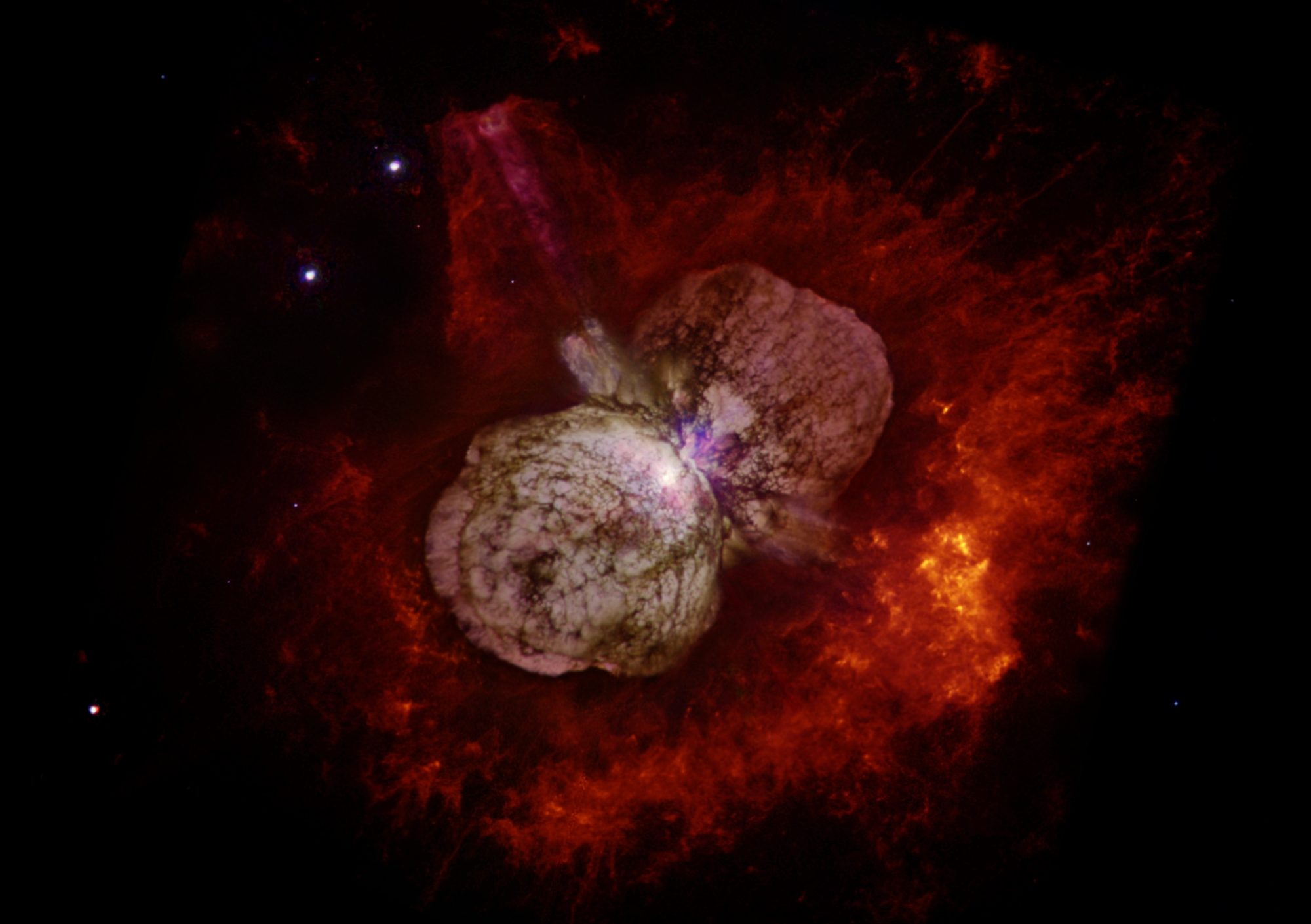Eta Carinae is the most massive and luminous star system within 10,000 light years of Earth. New UMBC research published in Nature Astronomy concludes for the first time that the system is emitting cosmic rays, some of which may reach Earth.
Producing cosmic rays, which also happens following a supernova, requires that particles be accelerated nearly to the speed of light. “We found that the accelerated particles are really energetic, which is much more than we expected from this star,” says Kenji Hamaguchi, the lead author on the study. Hamaguchi is a researcher at UMBC’s Center for Space Sciences and Technology, a partnership with NASA. The fourth author is Neetika Sharma, Ph.D. ’16, physics, who worked on the project as a postdoctoral fellow.
The new research takes advantage of NASA’s powerful NuSTAR satellite, which can detect and locate high-energy x-rays with remarkable accuracy. Different instruments have been tracking relatively low-energy x-rays from Eta Carinae for decades, and another instrument suggested Eta Carinae might be the source of the high-energy x-rays and even higher-energy gamma rays. However, those instruments haven’t been powerful enough to conclusively determine the source of the rays that they detect.
“That’s why we proposed the observations with NuSTAR,” says Hamaguchi. “NuSTAR can image x-rays in the high-energy range for the first time. So we can pinpoint the location of high-energy emissions.”
Eta Carinae is a binary star system, meaning two stars are orbiting each other. As they orbit, the stars come within 140 million miles of each other every five and half years. This is about the distance from Mars to the Sun, and very, very close for two stars.
Stars are constantly throwing off particles, creating what is known as the “stellar wind.” Based on their findings, the researchers explain that Eta Carinae generates high-energy x-rays and gamma rays when the two stars’ stellar winds collide. The rays’ intensity depends on the relative position of the two stars. Those cosmic rays then travel through the universe, and some of them may end up near Earth—but until now scientists haven’t been able to clearly identify their source.
Beyond confirming Eta Carinae as a source of cosmic rays, this new research also shows for the first time that a binary system like Eta Carinae is capable of accelerating particles to extreme speeds. Previously, that kind of acceleration had only been proven in the debris resulting from supernovae. This helps expand knowledge of how particles can accelerate in space, which is relevant for studies of the birth of the universe and a variety of other extreme situations in the cosmos.
Hamaguchi is already looking forward to the next new instrument beyond NuSTAR, as he works to increase understanding of how stellar winds interact, accelerate particles, and generate cosmic rays. He is drawn to analyzing complex data about the universe “because we can find something nobody knows,” he says. “Every time you get something new.”
Image: The supermassive star Eta Carinae is at the center of two huge and expanding clouds of dust and other material, the result of an eruption about 150 years ago. Nathan Smith/NASA.




